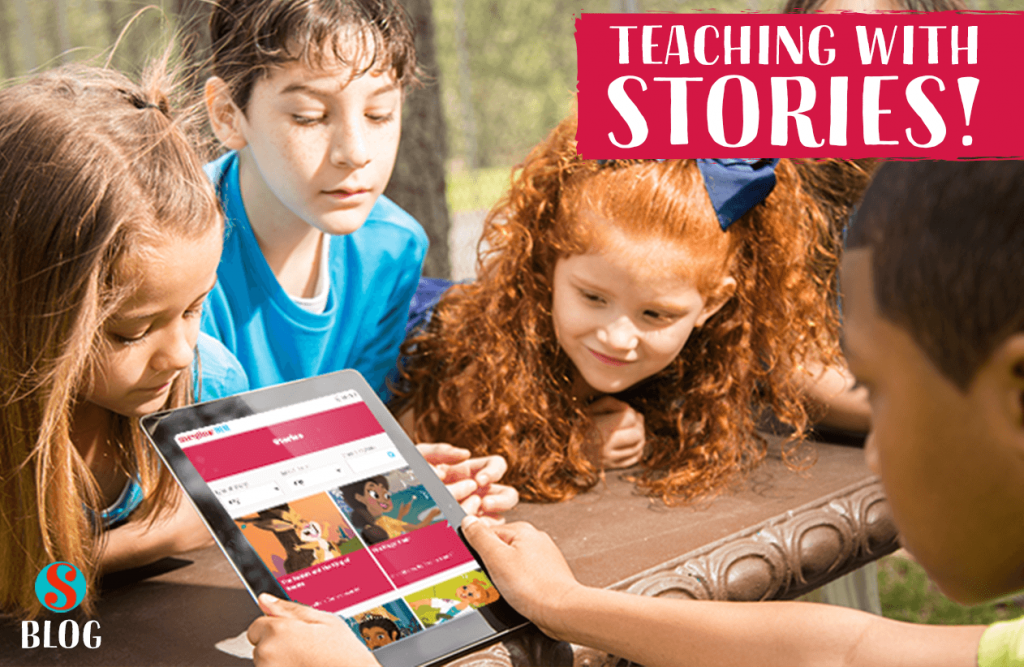Teaching With Stories!

Teaching with Stories!
Storytime is a big hit with families, but it is also popular with schools all over the world! Our colourful issues contain stories aimed at a variety of reading levels and cover a wide range of subjects and themes, which gives them broad appeal. Teachers also find that the magazine format is also less intimidating for reluctant readers than a traditional book.
We have received awesome feedback from the schools that subscribe to Storytime, and some teachers have even sent us tips about how they use the magazine in the classroom! We liked their feedback so much that we are sharing some of their ideas here – and we have also compiled them in a document you can download and share.
There is definitely more than one way to read Storytime! Trying out these tips will make classes more fun – and give you new ideas about how to add variety to catch-up with reading this summer.
Guided Reading
This is where the child reads a story they choose to themselves, but a grownup is nearby. You can ask them to read a paragraph or two out loud, and also help them with any difficult words they might encounter. It’s a great homework exercise, and can also be done during reading breaks. This exercise gives kids the confidence to try reading more challenging stories – and increase their vocabulary in the process!
At home: This approach is great when you want to help and encourage your children, but can’t give them 100% of your attention.
Shared reading
This is the classic ‘storytime’ situation, where you read a tale to them. This is a nice way to introduce children to stories they have not read before. Sharing a story in this way is a great bonding experience – even in the classroom. Let them interact with the story by showing them the illustrations and letting them ask questions. You can even add an imaginative/creative element to the experience by encouraging them to come up with their own endings!
At home: There’s nothing like a bedtime-story experience. If you are doing it in the evening, make sure to choose calming and positive stories to give the little ones sweet dreams.
1-to-1 reading
This is similar to shared reading, but you encourage the kids to read along with you. Ideal for beginning or reluctant readers! Reading along with a child is a great way to build confidence and a love of stories. Don’t let shyness stop them from reading – if you sense they are having difficulties with a word or two, you can join in and make sure they can get going again. A supportive exercise that is also great fun!
At home: Do this with siblings and cousins and make it a family game!
Peer-to-peer reading
If children with different reading levels around, they can read to each other and help each other out with any tricky words or phrases! This is a good way for children to share their knowledge and support each other. Plus, it is sure to spark discussions about what things mean or what might happen next! Children can take turns choosing their favourite stories. We’ve put together a Reading Buddies guided reading pack that you can use for your school here.
At home: If you have two or more children around, it’s a good pastime to keep them engaged and have them entertain each other. An excellent friends and sibling-bonding activity!
Independent reading
Do you have reading breaks at your school? This is where a child picks a story and reads it on their own, with no tests, no deadlines and no instructions! It’s a lovely way to introduce children to the pleasure of a good story. Reading breaks are now a standard activity in many schools around the country, and are great at encouraging kids to become enthusiastic readers!
At home: It is lovely for a child to be able to relax and read independently after a busy day at school. Parents can share this ‘quiet time’ by reading a book of their own. It is a great reminder that reading can be a pleasurable and relaxing activity!
Reading for fun is the best way to fall in love with the habit of reading! We created Storytime to make reading enjoyable for everyone, and can think of many more ways to share stories in the classroom and at home. As a parent, carer or a teacher, what are your favourite ways to read Storytime? Let us know below in the comments. And of course, a BIG thank-you to all of the teachers who shared their tips with us!
Happy reading,
The Storytime team